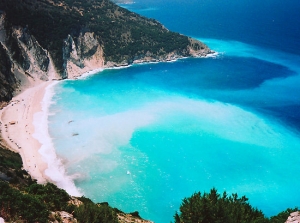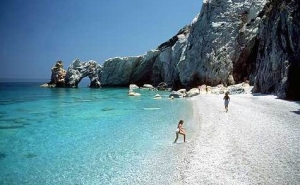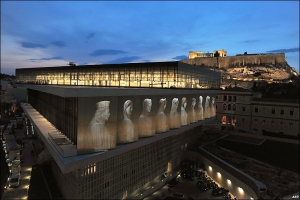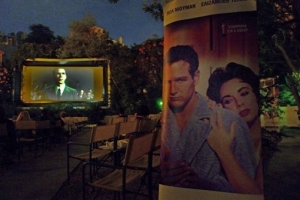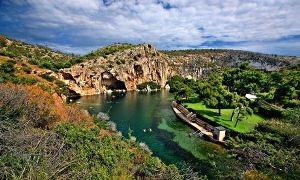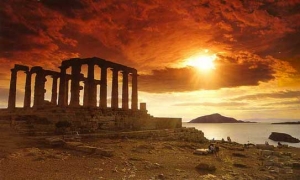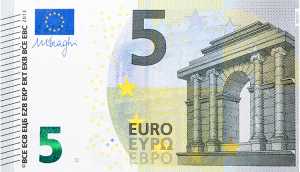ABOUT US
XpatAthens
Top 5 Beaches Of Kefalonia
Kefalonia is an island with numerous beaches for all preferences. Beaches crowded or isolated, with sand or pebbles, organized or not. Certainly, every beach on the island is a different magic picture and whatever choice you make the experience will stay engraved in your memory. In this text, we tried to pick the 5 best beaches and present them to you.
Myrtos
It is the trademark of Kefalonia with numerous international awards as one of the best beaches in the Mediterranean and it is certainly worth it. Moreover, every year Myrtos is being awarded from the Greek National Tourism Organisation (GNTO) with the blue flag. The scenery from above is unique and the view is certainly breathtaking. Green rocks that result in quite a long beach with white pebbles and the Ionian Sea at its best. The turquoise waters, with or without waves, will make your swimming experience unforgettable. And when you finally descend and encounter the infinite blue, you will be enchanted. Do not leave until watching the sunset; it’s a unique experience.
Antisamos
The island of Kefalonia attained special glamour and publicity because of the Hollywood production “Captain Corelli’s Mandolin”, which was filmed in the year 2000 on the island. The beach that fascinated most viewers was no other than the beach of Antisamos. Awarded with the blue flag, it is located a few kilometers away from the port of Sami. The landscape combines all shades of blue and green, where the vegetation grows almost into the sea.
Petani
“Epietanoi” is a word of Homer, meaning an area with abundant water throughout the year. The Petani Beach consists of fine white pebbles and crystal clear turquoise waters. The path to the beach is just as unique as the beauty of the whole of the landscape which literally leaves the visitor speechless. The beach is fully organized with a food and drinks station, sun beds and many restaurants on the seafront. Enjoy your coffee or drink, while admiring the breathtaking sunset.
To read more, go to visitgreece.gr
In Search of Glorious Beaches – Skiathos
Meyáli Ámmos, on the road to Koukounaries and Ahladiés, is a popular beach with crystal clear waters and picture-perfect tavernas by the sea.
Banana (or Krassa bay) is a wonderful beach surrounded by pine trees that attracts young people thanks to its water sports facilities and the frenetic parties that take place in its cafes and bars all day and all night! Banana’s sister beach, Small Banana, next to it, is ideal if you want to avoid the crowds or if you are looking for some peace and seclusion. It is famous for its clear blue waters and its pine trees. Those who want to get away from the crowds should also check out the western part of the island: Mandráki, Eliá, Agkistros and Small and Big Asélinos are all ideal choices to escape the crowds. Lalária, on the northeastern part of the island, is the kind of beach you find once in a lifetime. Impressive white rock formations; small round pebbles (which is what lalaria means in Greek), beautifully clean waters and the “hollow rock” standing imposingly on the beach provide a beautiful natural backdrop that will take your breath away. Note: you can only reach the beach by boat departing, weather permitting, from the port of Skiáthos.
Following walking routes
Nature lovers will be thrilled by the 25 197-km long, well signposted walking routes and trails which pass through some of the most beautiful and unspoilt parts of the island. Depending on your stamina, you can go on walks which last from one to six hours. Follow the routes and discover the pristine interior of the island or fabulous secluded spots with amazing views of the Aegean! A suggested route to explore the beauties of the island starts from Asélinos and goes past Kounistra Monastery, Small Asélinos Beach and Alygariés Beach ending at Kehriá Beach. The routes Ayia Eleni to Krifi Ammos and Madraki-Elia-Agkistro for discovering excellent beaches of unique beauty!
Getting there:
• By ferry or high speed ship from the port of Volos or Ayios Konstantinos.
• By ferry from the port of Thessaloniki (only during summertime)
• By air from Athens or Thessaloniki
Source: Visitgreece.gr
Visit The Acropolis Museum
The program ‘A Day at the Acropolis Museum’ invites visitors to spend a day at the Museum enjoying a range of activities.
Stroll through the Galleries
Take a stroll through the exhibition and speak to a museum archaeologist host available to answer any questions or queries you have. From the second floor balcony see a special and unexpected view of the Archaic Gallery. Visit the Parthenon Gallery on the third floor with its unique views of the Acropolis.
Conserving the Caryatids
The Acropolis Museum has commenced the conservation and restoration of the Caryatids, the Kore from the south porch of the Erechtheion temple. Visitors have the opportunity to watch conservators do the delicate work of cleaning the Caryatids with advanced laser technology.
Family Backpacks
The Museum invites families to search for the 12 different representations of the Goddess Athena amongst the exhibits of the permanent collection. Families can borrow a family backpack from the Museum’s Information Desk by leaving an identification card. Backpacks are available on a first-come first-serve basis.
Gallery Talks
Brief presentations by Museum Archaeologists-Hosts are held in Greek and English every Friday, Saturday and Sunday.
Film
Visitors can learn more about the Parthenon sculpted decoration from a video projected on the third floor at the entrance to the Parthenon Gallery.
Eats and Treats
The Museum invites visitors to have a meal or refreshment at the second floor restaurant with panoramic views of the Acropolis (children’s menu available). On a fine day visitors can sit outside on the restaurant balcony. A small café is also available on the ground floor offering views to the archaeological excavation below the Museum.
Reading Area and Wi-Fi
The Museum offers the reading area with free wi-fi internet access on the second floor outside the restaurant. Visitors can browse through books relating to the Parthenon, relax or use their laptop.
Museum Gifts
Treat yourself to a small memento of your visit or one for friends and family. Select a gift from the wide range of goods available from the Museum shops. Find books in the second floor shop and gifts and stationary on the ground floor.
Friday Nights at the Museum
Every Friday the Museum is open until 10 p.m. every Friday and the restaurant is open between 8 p.m. and 12 midnight serving a special menu, beautiful night views of the Acropolis and great value for money. For reservations, please contact the restaurant during Museum opening hours on +30 210 9000915.
Museum Contact Info:
15 Dionysiou Areopagitou,
Acropolis, Athens
Tel: 210-9000900
Website: www.theacropolismuseum.gr
Source: Breathtaking Athens and Acropolis Museum
Enjoy Some Of Athens' Best Open Spaces
Open spaces in Greece and especially in its busy Athens capital, offer a unique feeling of freedom. “Openness” is very much a part of the Greek culture, history, lifestyle, entertainment and character. Here are some favourite parts of the city where you can really enjoy the freedom of open space, relax and have fun.
Enjoy gardens, parks and playgrounds
Lying in the most famous spots of Athens or tucked away in well-hidden areas, the lush gardens and parks of Athens adorn the city’s neighbourhoods and, thanks to their scenic beauty, they form oases in the hustle and bustle of the city centre. Whether you want to take a romantic stroll, relax or offer your children a pleasant environment to play, the gardens of Athens are definitely to be visited during your stay in the Greek capital!
Visit Athens National Garden, an oasis in the centre of the city with more than 500 different species of plants, trees, birds and animals; home to the Botanical Museum, a zoo, a pond, a playground, a children’s library, a traditional café as well as scattered ancient monuments and statues. Walk along Pedio Areos, the biggest park in Athens, recently fully restored, an ideal place for walking, relaxing or having fun! Don’t forget to visit Thissio Park, the south-westernmost part of the Ancient Agora archaeological site, a favourite spot of the locals and one of the most frequented city places!
Have the most breathtaking views over Athens
Thanks to its rich morphology Athens has plenty of places where you can admire stunning panoramic views of the city. Romantic or not, let yourself be captivated by the Athenian cityscape as seen from above. Must “view” locations include Lycabettus Hill, Filopappou Hill, Kaisariani Monastery, Anafiotika in Plaka, Profitis Elias in Piraeus and Damari in Petroupoli.
Discover The Athens Riviera
You don't need to get on a ferry to escape the bustle of the Greek capital: take a short bus ride and you'll find superb local beaches along the sheltered Saronic Gulf stretching from the southern suburbs of Athens to the southernmost point of Attica, Cape Sounio. Just 10 miles south of the city –typically a 30-40 minute drive– you will find a place where urban sprawl gives way to an idyllic palm fringed setting.
Take the opportunity to swim, relax at a waterfront café, walk along the picture-perfect pedestrian streets and the marinas, exercise your favourite water sport, shop in one of the area’s modern shopping centres, dine by the sea or entertain yourself in one of the coastal avenue’s buzzing clubs.
To read more, please see visitgreece.gr
The Seaside Idyll Of The Athenian Riviera
Wednesday evening, it's just before midnight and I'm in the Athens suburb of Glyfada. At Lemoni on Kyprou Street – the most popular of the new, post-crisis breed of taverna – there are few vacant tables. Out on the pavement, four tall pine trees are corseted in gold lights.
Lavender and sweet peas spill from planter boxes made from Artemis wine crates. Greek couples and groups are smoking, sipping cloudy ouzo over shared platters; there are families with young children busting curfews.
A hundred metres further down the road, at Soleto, cafe society is at full tilt. Cars are double-parked (a bit of a Hellenic habit) and the trees are lit up like it's Christmas as Athenians venerate the holy trinity of life: caffeine, cigarettes, mobile phone. It's a scene full of kefi, a Greek word that means joyful spirits.
Something has changed of late.Two years ago, every visit to Glyfada (25 minutes from the Acropolis) meant seeing a freshly abandoned shopfront; now, the tumbleweed feeling has gone and there's a tangible pulse of optimism in this cosmopolitan, seaside town, capital of the Athenian Riviera.
Few visitors to Greece realise that less than 10 miles south of the city centre – and still defined as Greater Athens – lies this photogenic stretch of mountains, mineral lakes, seaside resorts and sandy beaches with blue-flag certified clean waters. You won't find the "Athenian Riviera" on any Google map (yet); it's more of an idea. The words are local shorthand for the 35 miles of coastal road that connect the seaside retail hub of Glyfada to Cape Sounion and the ruins of the Temple of Poseidon on the Attica peninsula.
To read this article in full, please visit: theguardian.com
By Amanda Dardanis
Poseidon’s Most Picturesque Sanctuary
The ancient Greek temple of Poseidon, god of the sea in classical mythology, is located at the tip of the Athenian Riviera at Cape Sounion. The remains are perched on the headland, surrounded on three sides by the sea. The ruins bear the deeply engraved name of English Romantic poet Lord Byron (1788–1824). The site is a perfect day-excursion from Athens, especially beautiful for sunset over the Aegean Sea as viewed from the ruins ~ definitely an incredible spectacle!
Archaeological finds on the site date from as early as 700 BC. Herodotus tells us that in the sixth century BC, the Athenians celebrated a quadrennial festival at Sounion, which involved Athens' leaders sailing to the cape in a sacred boat.
The temple at Sounion whose columns still stand today, was probably built in ca. 440 BC. This was during the ascendancy of Athenian statesman Pericles, who also rebuilt the Parthenon in Athens. Today’s standing temple was constructed over the ruins of a temple dating from the Archaic Period. It is perched above the sea at a height of almost 60 m. The design of the temple is a typical hexastyle i.e. it had a front portico with 6 columns. Only some columns of the Sounion temple stand today, but intact it would have closely resembled the contemporary and well-preserved Temple of Hephaestus beneath the Acropolis, which may have been designed by the same architect.
As with all Greek temples, the Poseidon building was rectangular, with a colonnade on all four sides. The total number of original columns was 42: 15 columns still stand today. The columns are of the Doric Order. They were made of locally-quarried white marble. They were 6.10 m (20 ft) high, with a diameter of 1 m (3.1 ft) at the base and 79 cm (31 inches) at the top.
At the centre of the temple colonnade would have been the hall of worship (naos), a windowless rectangular room, similar to the partly intact hall at the Temple of Hephaistos. It would have contained, at one end facing the entrance, the cult image, a colossal, ceiling - height (6m) bronze statue of Poseidon. Probably gold-leafed, it may have resembled a contemporary representation of the god, appropriately found in a shipwreck, shown in the figure above. Poseidon was usually portrayed carrying a trident, the weapon he supposedly used to stir up storms. On the longest day of the year, the sun sets exactly in the middle of the caldera of the island of Patroklou, the extinct volcano that is offshore, suggesting astrological significance for the sitting of the temple.
In a maritime country like Greece, the god of the sea was bound to occupy a high position in the divine hierarchy. In power, Poseidon was considered second only to Zeus (Jupiter), the supreme god himself. His implacable wrath, manifested in the form of storms, was greatly feared by all mariners. In an age without mechanical power, storms very frequently resulted in shipwrecks and drownings.
The temple at Cape Sounion, therefore, was a venue where mariners, and also entire cities or states, could propitiate Poseidon, by making animal sacrifice, or leaving gifts.
Archaeological excavation of the site in 1906 uncovered numerous artefacts and inscriptions, most notably a marble kouros statue and an impressive votive relief, both now in the Athens National Archaeological Museum.
The Legend of Cape Sounion:
According to legend, Cape Sounion is the spot where Aegeus, king of Athens, leapt to his death off the cliff, thus giving his name to the Aegean Sea. The story goes that Aegeus, anxiously looking out from Sounion, despaired when he saw a black sail on his son Theseus's ship, returning from Crete. This led him to believe that his son had been killed in his contest with the dreaded Minotaur, a monster that was half man and half bull. The Minotaur was confined by its owner, King Minos of Crete, in a specially designed labyrinth. Every year, the Athenians were forced to send 7 men and 7 women to Minos as tribute. These youths were placed in the labyrinth to be devoured by the Minotaur. Theseus had volunteered to go with the third tribute and attempt to slay the beast. He had agreed with his father that if he survived the contest, he would hoist a white sail. In fact, Theseus had overcome and slain the Minotaur, but tragically had simply forgotten about the white sail.
Source: Wikipedia
Marathon: A Walk Through History
There are some places that leave their imprint behind. No matter how many years go by, they continue to radiate a certain brilliance. Marathon is such a place. Chosen by the ancient Greeks to become a permanent part Athens Greece history, it is a place of civilisation, courage and daring that tells of the course followed by the Greek people across the ages and through eternity.
Certainly a visit to Marathon calls for an early start, when Nature is just coming alive and the sun begins to warm the paving stones. Marathon is a flashback in time, a journey to the past and present of Athens, as the monuments and natural beauty tell the whole story of the capital of the city-state. Marathon got its name from the son of Epopeus who was banished by his father and came to this area - 42 km northeast of Athens - a suppliant.
A fertile, half-moon-shaped valley, it is protected by the hills of Vrilissos and the mountains of Diakria and touches the sea at Marathon Bay. It is one of the most fertile valleys, where fruit trees and grape vines are cultivated. The route from Athens to the village passes through planted fields, vineyards, olive groves and lush hillsides on Attica's east side. The wondrous peaceful beaches rest the eye while the body enjoys the sun and clear waters. The most popular beach is at Schinias, which served as the venue for rowing and canoeing competition during the 2004 Olympic Games.
Back to the future
The Marathon area is of great historical significance, as it was the site of the famous battle of the same name that took place in 490 BC. Ten thousand Athenians and a thousand Plataeans pushed the Persians to the sea, where they boarded their ships and retreated. The Greeks owed their victory over the Persian army to military genius Miltiades. Immediately after the battle was won, a soldier named Pheidippides was sent to Athens with the news. He ran all the way to Athens and managed to say, "We have won," before he collapsed and died. That was the first marathon, and it is this same route that today's marathon runners follow. The 9m-high tomb was erected at the site of the battle in memory of the 192 Athenians who had lost their lives fighting; there were originally 10 columns on top of the burial mound to represent the 10 tribes of Attica. The tomb was discovered in early 1884 by Heinrich Schliemann.
The Rhamnus mystery
The archaeological site of Rhamnus lies near Marathon and findings at the site indicate the area was inhabited during the Neolithic age. Its name derives from the word "rhamnus," a shrub variety (buckthorn) found throughout the area. In ancient times, Rhamnus was known for its port and its castle. There are remains of two temples at the site: the Great Temple dedicated to Nemesis, the goddess of divine retribution, which is considered the most important sanctuary of this specific goddess in all of ancient Greece; and the Small Temple dedicated to Themis, the goddess of justice. Both temples were built in the 5th century BC. There are also remains of the ancient theatre, the fortress and several grave sites. Besides the archeological sights, visitors are rewarded with the marvelous views toward Evoikos Bay and the surrounding lush green landscape.
Marathonas Archaeological Museum
Though well-known to visitors, it is a rather small museum featuring important findings from various historical periods. It is located next to the Middle Helladic cemetery of Vrana and houses artefacts from the prehistoric age through the Roman period. The artefacts from the Neolithic period discovered in the Cave of Pan at Oinoi, the funerary stelae and the votive inscriptions from the sanctuaries of Marathon are especially noteworthy. The most notable finding is the "Marathon Youth (Ephebe)," an impressively intact statue found by fishermen in 1925. It is bronze, 1.24 m tall, and thought to be of the Praxiteles school. The museum is open daily, except Mondays, 8:30 am - 3 pm.
The Marathon Run Museum
This is the second spot that makes a visit to Marathon a true history lesson. It was opened in 2004 and presents the complete history of the Olympic Marathon Race from 1896 in Athens through 2004, when it was again held in Athens and in which 220 athletes from 55 countries participated. Most of the photographs, posters and drawings have been provided to the museum by the International Olympic Committee from the Olympic Museum Lausanne. The Marathon Run Museum is open daily, except Monday, 9 am - 9 pm.
Marathon Lake
A dam was constructed at the point where the torrents of Charadros and Varnavas meet to shore up the lake and collect rain water. This is how the artificial lake of Marathon was formed; following necessary treatment, its waters flow to the Athens reservoirs through underground aqueducts. It is the largest permanent source of potable water for Athens and Piraeus. The Marathon Dam is particularly impressive as the artful construction and Pendelikon marble cladding make it the only one of its kind in the world. Marathon Lake is a place of incomparable beauty, enriched by the pine forest and picturesque lanes; there is also a quaint café near the dam.
Schinias-Marathon National Park
This is one of the 25 fully charted protected areas of Greece. The Olympic Rowing and Canoeing Centre was located here and the tomb of the fallen warriors from the Battle of Marathon was included in its designation. The national park is divided into eight zones, one marine zone and seven landbased zones. Each one warrants special protective measures so that the ecosystem is not disturbed. Specifically, the Schinias wetlands (430 hectares) and hilly areas around the Kynosoura peninsula and Drakonera are fully protected. The wetlands constitute a habitat for species of wild birds, such as egrets and hawks, as well as many other species of birds. It is possible to take part in a variety of activities here, such as bicycling, bird watching and short excursions to nearby areas.
How to get to Marathon
From the centre of Athens, follow Vasilissis Sofias Avenue, which branches into Messogion Avenue. Marathon Avenue begins at Stavros Aghias Paraskevis and continues to Marathon. At the Marathon intersection, Lake Marathon Avenue leads to the lake.
To read more, please visit thisisathens.org
What To Do In Athens With 5 Euro
Athens is a multi-faceted city which gives visitors, regardless of age, mindset, style or budget, the chance to enjoy a unique experience. Since the best things in life are free, let’s find out what someone can do in Athens with only 5 euros.
Visit The Acropolis Museum
One of the finest architectural diamonds and best museums worldwide. You will be impressed, no matter how many times you visit. Over and over again, the feeling one gets is overwhelming – admiration and awe take over. With the exhibition area occupying 14,000 m2 and the exhibits numbering 4,000, it is understandable that one visit cannot cover all this beauty. There are always details waiting to be discovered. The light coming through the glass engages in a playful motion with the surfaces and the night casts a magical veil on the past and the dynamics of the space. You can only be taken aback by its everlasting splendor. Visit the museum during the winter months when the ticket price is just 5 euros.
Ride Along The Athenian Riviera
Athens Riviera: Faliro, Glyfada, Voula, Vouliagmeni, it doesn’t matter where to – just climb on the tram or the bus line that takes you there and rush to the calling of the sea. Leave the madness of the city behind and relax by viewing the amazing Saronic Gulf. If the weather is appropriate, take a swim and lay on the beach with company, or with the company of a book. If the water is not yet warm enough, get lost in the endless horizon listening to your favorite music. Whatever the case, the ideal time to begin your ride is just before sunset.
Eat ‘Vromiko’ Downtown
As the daylight evaporates, the canteens start getting their fast food ingredients ready. The smell of grilled meat takes over the surrounding streets and neighborhoods, capturing the people that move among them. The sandwich is called ‘vromiko’, which in Greek means ‘dirty’, because it is generously stuffed with full-fat ingredients that create delightful bites. The canteens are scattered in various downtown spots, but the most popular is in Mavili Square, where, after all-night partying, the night walkers gather to claim a tasteful epilogue to their fun.
Visit A Book Bazaar
A journey to the parallel world of books, not only for those capable of reading between the lines! From time to time, the area of Zappeio, Klafthmonos square, Dionisiou Areopagitou Street, host the most famous utdoor book bazaars where you can lose yourself in the pages. With free entrance and special low prices you can buy a rare edition and a book you wouldn’t want your library to miss. These bazaars are not permanent, so you’d better watch out for their opening dates.
Article source: VisitGreece.com
What To See In Athens
Daily events (including music, bars, museums, galleries, markets etc.)
Summer daily 8am-7pm; winter daily 8.30am-3pm and floodlit by night
The Acropolis is a rocky mound rising above Plaka. It is the birthplace of Athens, and crowned by three ancient temples, the best known being the Parthenon.
Agorá
Daily
In ancient times Athens' political, administrative and cultural heart, today the Ancient Agora in Monastiraki is a green landscape dotted with crumbling ruins.
 Balthazar
Balthazar
Daily
Balthazar is an exclusive bar-restaurant set in a romantic walled garden decorated with fairy lights.
 Battleship Averoff Museum
Battleship Averoff Museum
Daily
The Battleship Averoff is the most important and impressive surviving naval vessel in the history of the Hellenic Navy. Commissioned in 1911, it served for 44 years.
Benaki Museum
Daily; not Tue
Occupying a neo-classical house in Kolonaki, the Benaki Museum offers a walk through the history of Greek art from 3000 BC up to the 20th century. Exhibits are laid out in chronological order.
 Benaki Museum of Islamic Art
Benaki Museum of Islamic Art
Daily; not Mon
The Islamic Museum in Athens, part of the Benaki Museum, has relocated to a bigger building for a better viewing experience. The neoclassical complex houses works from India, Persia, and Asia.
Byzantine & Christian Museum
Daily; not Mon
In its underground exhibition space in Kolonaki, the Byzantine and Christian Museum traces the Byzantine Empire from the birth of Christianity to the 1453 fall of Constantinople.
 Centre of Hellenic Tradition
Centre of Hellenic Tradition
Daily
For orignal souvenirs and gifts, call at the Centre of Hellenic Tradition, which stock authentic Greek folk art.
Dimitris Pierides Museum of Contemporary Art
Daily
The Dimitris Pierides Museum of Contemporary Art houses over a thousand paintings, sculptures, engravings and ceramics and includes works by artists from Greece and Cyprus.
Frissiras Museum
Daily; not Mon or Tue
In Plaka, the Frissaras Museum is Greece's only museum to contemporary European painting. There's a permanent collection, dedicated to the human figure, as well as pieces by Hockney.
![]() Goulandris Museum of Cycladic Art
Goulandris Museum of Cycladic Art
Daily; not Tue or Sun
In Kolonaki, the Goulandris Museum of Cycladic Art is revered for its collection of elegant marble figurines. Surprisingly contemporary in style, these enigmatic pieces were placed in burial sites.
 Kerameikos Archaeological Site
Kerameikos Archaeological Site
Daily
The Kerameikos was the potters' quarter of classical Athens and also the official cemetery of the city. Today it is a tranquil and fascinating archaeological site, away from the bustle of the city.
Lykavittos
Daily
Athens' highest point, 295 metres high, Mount Lykavittos is served by cable car from Kolonaki. Paths zigzag up through pinewoods to the summit, capped by a whitewashed church and cafe.
Monastiraki Flea Market
Daily
Like an Eastern bazaar, the open-fronted stores of Monastiraki Market stock copperware, backgammon sets, army surplus gear, leather goods and cheap jewellery. On busy Sunday mornings, everyone meets here.
 Museum of the City of Athens
Museum of the City of Athens
Daily; not Tue
The Museum of the City of Athens is housed in a neoclassical building constructed in 1833 which was used as King Otto's temporary palace from 1836-1842.
Museum of Greek Folk Art
Daily; not Mon
The Museum of Greek Folk Art in Plaka displays costumes, embroidery, jewellery, ceramics, arms and folk theatre artefacts from around Greece. Don't miss the Theofilis Room.
 Museum of Greek Traditional Instruments
Museum of Greek Traditional Instruments
Daily; not Mon or Sun
Hidden away in pretty Plaka, the Museum of Greek Traditional Instruments displays 1,200 musical instruments, ranging from gypsy flutes to shepherds' goatskin bagpipes.
National Archaeological Museum
Daily
National Archaeological Museum
Home to the world's finest collection of ancient Greek art, the marble-floored National Archaeological Museum, near Omonia, displays larger-than-life sculptures of heroes from Greek mythology.
 National Gallery of Art
National Gallery of Art
Daily; not Tue
Tired of ruins? Make sure you visit the biggest picture and portrait gallery in Greece, the National Gallery, or Ethniki Pinakotheki.
National Gardens
Daily
Designed as the grounds of the 19th-century royal palace, now the Parliament, the National Gardens in Syntagma display lush planting, duck ponds, strutting peacocks and a small zoo.
Numismatic Museum
Daily; not Mon
With a history going back to 1829, Athens' Numismatic Museum is one of the few of its kind in the world and the only such museum in the Balkans. The strength of its collection lies in some of the world's oldest coins.
 Plaka
Plaka
Daily
The Plaka sits in the shadow of the Acropolis in the oldest part of Athens and with most of the streets closed to automobile traffic, it is one of the most pleasant neighbourhoods in the city.
Roman Forum
Daily
From 1BC to 4AD, traders met in the Roman Forum - a rectangular courtyard lined with shops. Also on the site in Plaka stands the octangular Tower of the Winds, built in 1BC by Macedonian workers.
Spyros Vassiliou Museum
Daily
The home and studio of Greek artist Spyros Vassiliou (1902/3-1985) is now open to the public as a museum and archive, becoming the principal authority on the artist.
 Stavros Melissinos
Stavros Melissinos
Daily; not Sun
Stavros Melissinos began crafting handmade leather sandals in 1954. When poet Stavros retired in 2004, the shop moved to Psirri and is now run by his son, Pantelis.
Technopolis
Daily
The once run-down industrial area of Gazi began its transformation into Athens' most happening nightlife district with the opening of Technopolis in 1999. Occupying the former city gasworks.
Vorres Museum
Daily
The Vorres Museum consists of a complex of ten acres of buildings, courtyards and gardens. Its collection of over 6000 items covers 4000 years of Greek history.
 War Museum
War Museum
Daily; not Mon
The War Museum of Athens explores the history of warfare from stone axes to heavy artillery. Other exhibits cover the classical and medieval period, the Greek War of Independence and conflicts.
One Of Athens’ Most Enchanting Temples
If you have yet to explore the grounds of this incredible temple, this should be a definite stop during your next afternoon stroll in the city center. The Temple of Olympian Zeus, also known as the Olympieion or Columns of the Olympian Zeus, is a colossal ruined temple that was dedicated to Zeus, king of the Olympian gods.
Construction began in the 6th century BC during the rule of the Athenian tyrants, who envisaged building the greatest temple in the ancient world, but it was not completed until the reign of the Roman Emperor Hadrian in the 2nd century AD some 638 years after the project had begun.
During the Roman periods it was renowned as the largest temple in Greece and housed one of the largest cult statues in the ancient world. Yet, the temple's glory was short-lived, as it fell into disuse after being pillaged in a barbarian invasion in the 3rd century AD. It was probably never repaired and was reduced to ruins thereafter. In the centuries after the fall of the Roman Empire, the temple was extensively quarried for building materials to supply building projects elsewhere in the city. Despite this, substantial remains remain visible today and it continues to be a major tourist attraction.
The temple is located about 500 m south-east of the Acropolis, and about 700 m south of Syntagma Square. Its foundations were laid on the site of an ancient outdoor sanctuary dedicated to Zeus. An earlier temple had stood there, constructed by the tyrant Pisistratus around 550 BC. The building was demolished after the death of Peisistratos and the construction of a colossal new Temple of Olympian Zeus was begun around 520 BC by his sons, Hippias and Hipparchos. Designed by the architects Antistates, Callaeschrus, Antimachides and Porinus, the Temple of Olympian Zeus was intended to be built of local limestone in the Doric style on a colossal platform measuring 41 m (134.5 feet) by 108 m (353.5 feet). It was to be flanked by a double colonnade of eight columns across the front and back and twenty-one on the flanks, surrounding the cella.
The work was abandoned when the tyranny was overthrown and Hippias was expelled in 510 BC. Only the platform and some elements of the columns had been completed by this point, and the temple remained in this state for 336 years. The temple was left unfinished during the years of Athenian democracy, apparently because the Greeks thought it hubristic to build on such a scale.
Fifteen columns remain standing today and a sixteenth column lies on the ground where it fell during a storm in 1852. Nothing remains of the cella or the great statue that it once housed.
The temple was excavated in 1889-1896 by Francis Penrose of the British School in Athens (who also played a leading role in the restoration of the Parthenon), in 1922 by the German archaeologist Gabriel Welter and in the 1960s by Greek archaeologists led by Ioannes Travlos. The temple, along with the surrounding ruins of other ancient structures, is a historical precinct administered by Ephorate of Antiquites of the Greek Interior Ministry.
Source: Wikipedia

